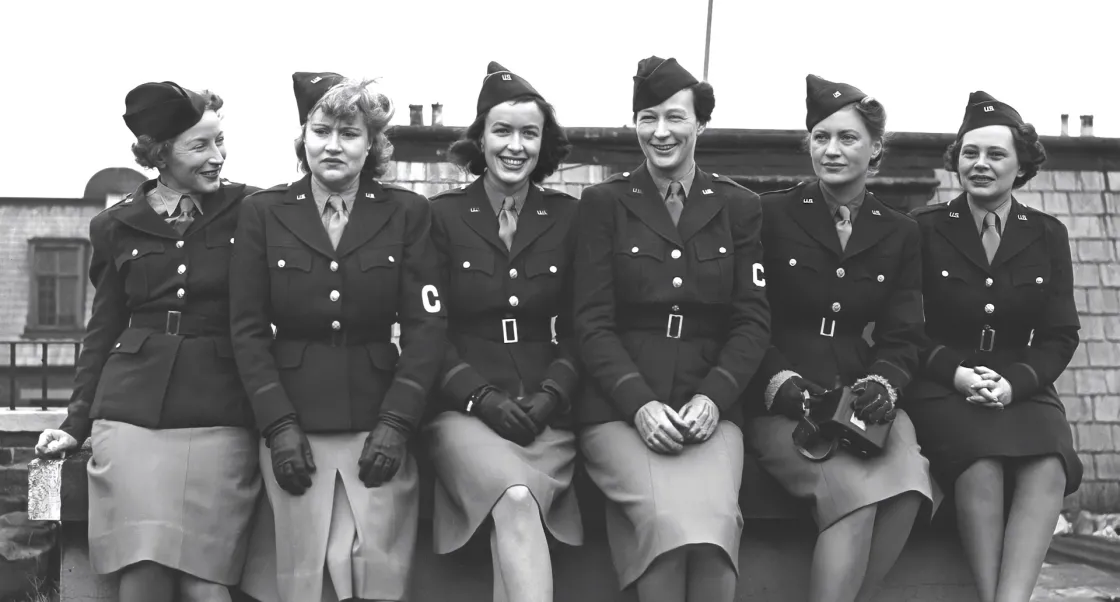Capturing the Stories

The National WWII Museum, New Orleans, La.
How did a city more synonymous with the War of 1812 and the Civil War come to be home to the extraordinary National World War II Museum? Higgins Industries, which designed, built and tested the eponymous amphibious landing craft vital to Allied success in Normandy, was a New Orleans shipbuilder. Spearheaded by longtime University of New Orleans history professor Stephen Ambrose, whose Band of Brothers and D-Day inspired both public interest and acclaimed film and television productions, the National D-Day Museum was dedicated on June 6, 2000. Four years later, Congress designated it the nation’s official museum for the entire war, supporting subsequent expansions in its subject matter and collections.
The facility faces difficult questions: How does a nation remember a war that was not just a war, but total war? A war that contained technological advancements that aimed to not only kill on a mass level but save on one, too. A war that contained ideological, religious and political clashes. One that marshalled more than 100 million men and women, civilian and soldier, into combat? One that affected almost every corner of the Earth and whose omnipresent shadow still lurks around the corner?
In no small part, the museum safeguards the memories of those who were there. Since its creation, they have been on a mission to capture the oral histories of every surviving veteran of World War II and highlight the service of the men and women of the Greatest Generation. As we mark the 80th anniversary of the events concerned, this takes on increased significance: Today, fewer than 120,000 veterans of World War II are still alive — less than one percent of the 16.4 million Americans who served.
“Preserving the stories of the men and women who served in World War II has been at the heart of our institution since its founding,” said museum President and CEO Stephen J. Watson. “We have the enormous responsibility to ensure that the memories and experiences of the war will not be lost as those who lived through it leave this world. It is our hope that this museum, built in honor of the WWII generation, will allow visitors to connect with history and the people who sacrificed so much during World War II for years to come.”
As the era moves from “living memory,” this work will be all the more important. The war’s many aspects must be told comprehensively and accurately and with compelling connections to our modern lives. That’s why the National World War II Museum integrates narratives based in the air, on land and on sea, as well as delivering an experience across multiple media: immersive galleries covering the Pacific, Europe and the home front, a 4-D multimedia experience narrated by Tom Hanks and numerous podcasts to enjoy as preparation for or follow-up to your visit.
In profiling stories across a spectrum of war experience, the museum is uniquely positioned to bring the oft-forgotten to light.
For example, the Women at War section, features the complicated life of prolific World War II photographer Elizabeth “Lee” Miller.

By 1939, Miller had been many things: a model for Vogue and Harper’s Bazaar, Pablo Picasso’s muse and a journalist. Known for her numerous romantic liaisons with European elite, as war broke out on the European continent, Miller, located in London at the time, found new purpose and passion.
Just one of four female photographers accredited as official war correspondents with the U.S. armed forces in 1944, Miller was the first and only wartime photographer to record the first Allied use of napalm at St. Malo, France, and provided witness to the horrors of the Holocaust. Her photographs of the liberation of Dachau were widely spread by the Allies as evidence of Nazi crimes.
In her report back to Vogue, after witnessing the abject savagery of the Final Solution, Miller simply wrote “Believe it” — which became the subsequent title of her work featured in American Vogue.
After the war, Miller receded somewhat from the spotlight, unable to reckon with what she had seen and done during the war. It was only after her death in 1977 that her son, Antony Penrose, discovered Miller’s work — hidden upstairs in the family attic.
If you think Miller’s story is the stuff that gripping cinema is made of, you aren’t alone. Her story will come to life this fall, with Oscar winner Kate Winslet slated to portray Miller in the upcoming film Lee, with Alexander Skarsgård co-starring as Roland Penrose, an English Surrealist painter, photographer and poet, and Lee’s paramour.
As with even the best period film, historians will likely find things to quibble with in the production. But it should spark the imagination of new audiences and, hopefully, inspire a subset to explore beyond the Hollywood glamour at the National World War II Museum and other quality institutions that keep such stories alive.





